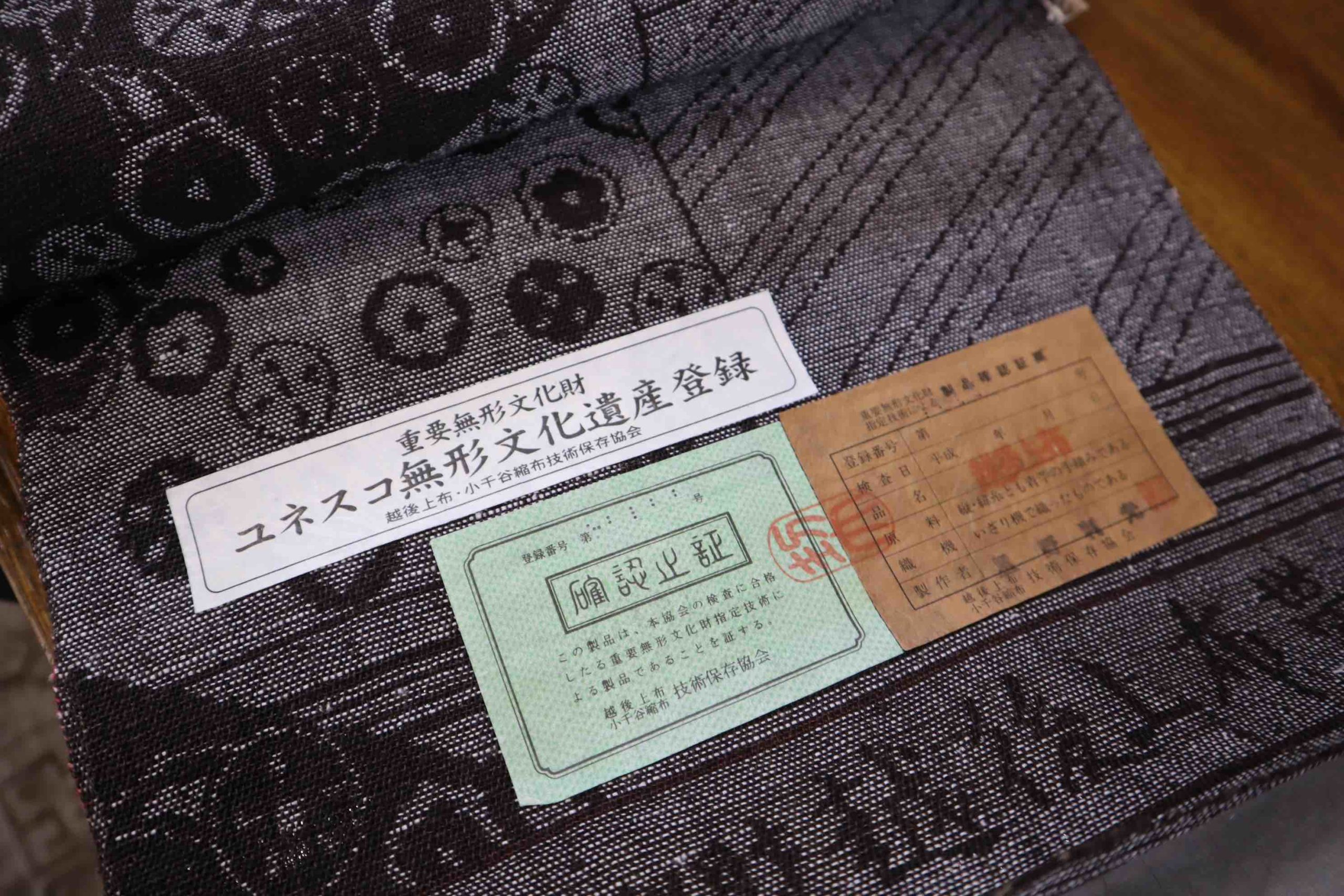越後上布
Pronunciation: Echigo-jofu
Production area: Minamiuonuma City and Ojiya City, Niigata Prefecture
Echigo-jofu is a textile woven not from hemp but from Choma (ramie). Plain-woven fabrics are called Echigo Jofu, while crepe-woven ones are classified as Ojiya-chijimi. A record states that between 749 and 757, cloth called “Efu” was presented to the imperial court from Kubi District, Echigo Province, and preserved in the Shosoin Repository. Renowned as one of Japan’s finest textiles, Echigo-jofu was once described as “Echigo in the East, Miyako in the West.” Its beauty lies in the combination of hand-spun ramie threads and intricate warp-and-weft Kasuri (ikat) patterns. To create these designs, patterned tapes are stretched in parallel to transfer motif positions onto the weft yarns. Then, areas not to be dyed are tied with cotton threads using the Kubiri (resist-tying) method. This highly skilled process requires such expertise that master artisans may tie as many as 2,000 bindings in a single day. Designated an Important Intangible Cultural Property in 1955, Echigo Jofu must meet strict requirements: 1. All yarns must be hand-spun from ramie. 2. Kasuri (ikat) patterns must be created by Kubiri (resist-tying). 3. The textile must be woven on an Izaribata (sitting loom). 4. Crimping (Shibotori) must be achieved through Yumomi (kneading in hot water) and Ashibumi (foot pressing). 5. Bleaching must be performed by Yukizarashi (snow bleaching). In 2009, Echigo-jofu, along with Ojiya-chijimi, was inscribed on UNESCO’s Representative List of the Intangible Cultural Heritage of Humanity.

Photo courtesy of the Echigo Jofu and Ojiya Chijimi Preservation Society



















